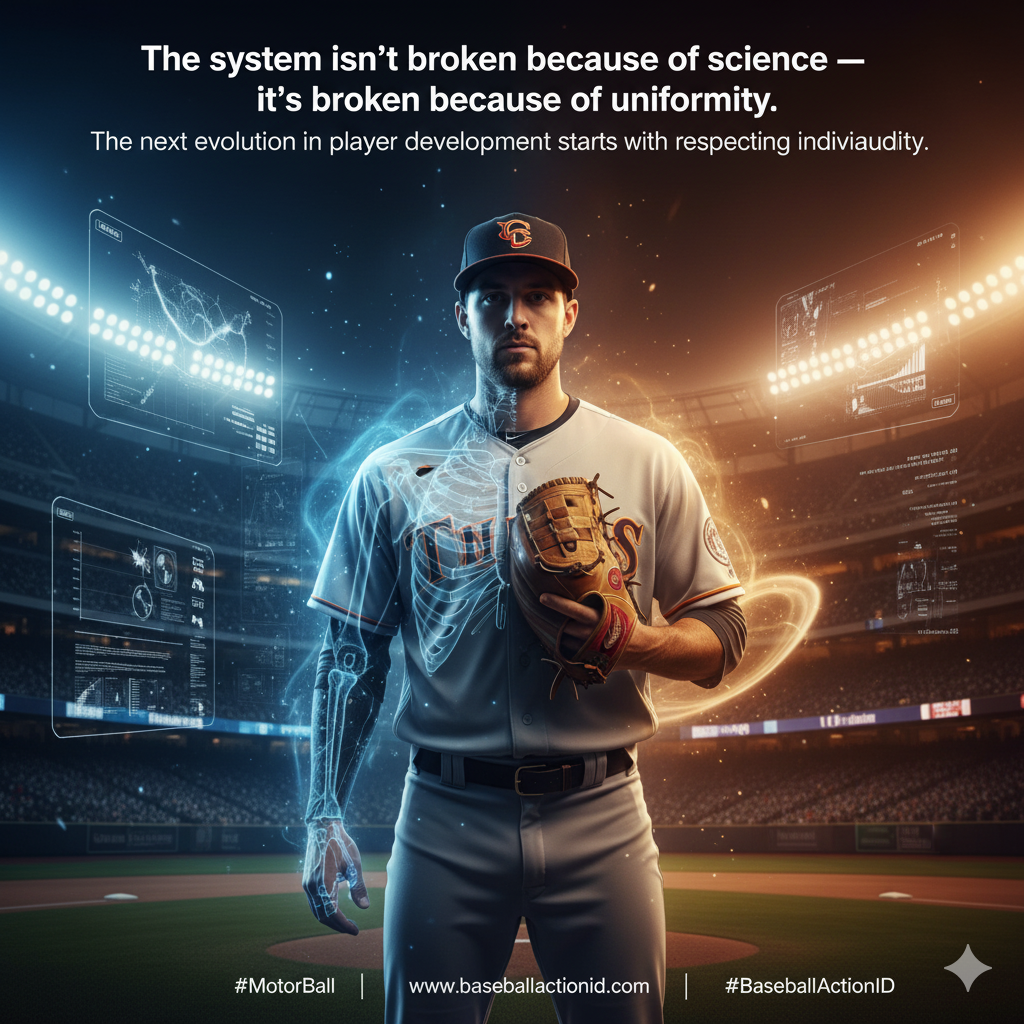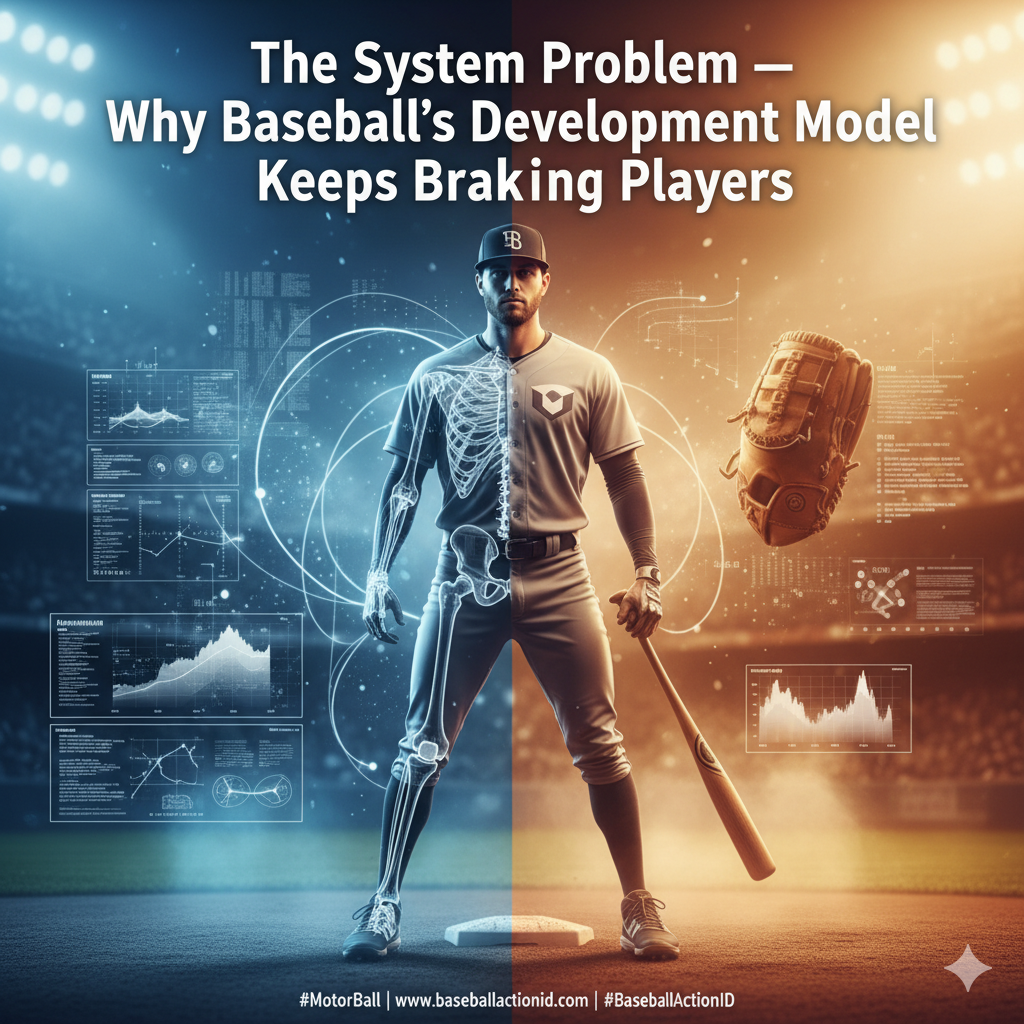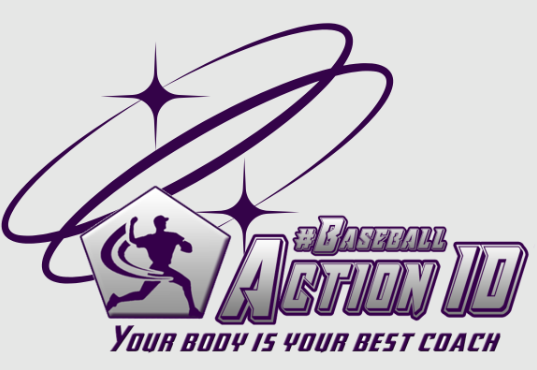The System Problem — Why Baseball’s Development Model Keeps Breaking Players

After publishing Part 1 of this series — on the real conditioning gap in baseball — I received dozens of private messages from coaches, coordinators, and player development professionals.
Some were curious. Some were frustrated.
But one response, in particular, stood out.
It came from someone who’s been inside the system for years — someone who’s seen what really happens between the training lab, the field, and the injured list.
His reaction was simple:
“The system is broken. Everyone’s following the same model — and it keeps producing the same results.”
That comment captures the quiet truth many inside professional baseball already feel but rarely say out loud.
Despite all the data, biomechanics software, and “precision” development tools, players are breaking down faster and more frequently than ever before.
The One-Size-Fits-All Trap
The entire system has become standardised — almost industrial.
Biomechanical labs, mobility assessments, strength templates — all built around one universal concept of how the human body should move, train, and recover.
It’s clean. It’s data-driven. It looks objective.
But it’s also blind to individuality.
The model assumes that every athlete’s system should adapt to the same kinetic ideal — the same delivery shapes, same sequencing, same postural checkpoints.
And that’s exactly where things start to go wrong.
Because from a Motor Preferences and #MotorBall perspective, no two nervous systems organise movement the same way.
When you force a body to move against its natural coordination blueprint — even in pursuit of perfect mechanics — you create invisible tension that slowly erodes efficiency, timing, and tissue resilience.
That tension doesn’t show up on the force plate.
It shows up later — on the injury report.
When Data Replaces Understanding
Data was supposed to make us smarter.
Instead, it made us obedient.
We’ve reached a point where numbers validate everything — even when the movement behind those numbers contradicts how the athlete’s body actually works.
Coaches are told to “trust the data,” but what happens when the data is only measuring adaptation to a flawed model?
Biomechanics isn’t the problem.
The interpretation is.
Labs measure movement — but they don’t measure preference.
They capture the output, not the neural pathway that produced it.
And when development programs use that partial picture as the absolute truth, individuality gets erased.
The result?
Every player gets “optimised” the same way — even if the system they’re being optimised for is the very thing breaking them.
What We’re Really Missing
The gap isn’t scientific — it’s perceptual.
We’ve mistaken uniformity for progress and standardisation for safety.
The body doesn’t thrive on uniformity.
It thrives on coherence — when the mechanical, neurological, and energetic systems are aligned with how the athlete naturally builds power, rhythm, and control.
Some athletes need to find rhythm through motion.
Others need grounding through stillness.
Some need explosive, elastic work.
Others need a controlled, concentric structure.
It’s not about opinions.
It’s about biology.
Ignoring those distinctions doesn’t make them disappear — it just transfers the problem from the field to the rehab room.
The #MotorBall Perspective
The Motor Preferences model isn’t an alternative “method.”
It’s a missing foundation.
It explains why two pitchers with identical mechanics can have completely different stability patterns…
Why does one recover quickly from high workloads while another crashes under the same volume…
and why strength gains often don’t translate to repeatable performance.
#MotorBall brings that understanding back into the development process — connecting how an athlete’s body prefers to move with how it must train, recover, and compete.
Because when movement patterns, energy systems, and motor profiles align, the body stops fighting itself.
And when that happens, injury prevention becomes a byproduct of good design — not an accident.
Where We Go From Here
This isn’t an attack on science.
It’s a call to bring human variability back into it.
The next phase of high-performance baseball won’t come from better cameras, more data points, or new lab technology.
It will come from understanding why two athletes with the same data respond completely differently to the same program.
That’s where the future is.
That’s what #MotorBall is built to answer.

